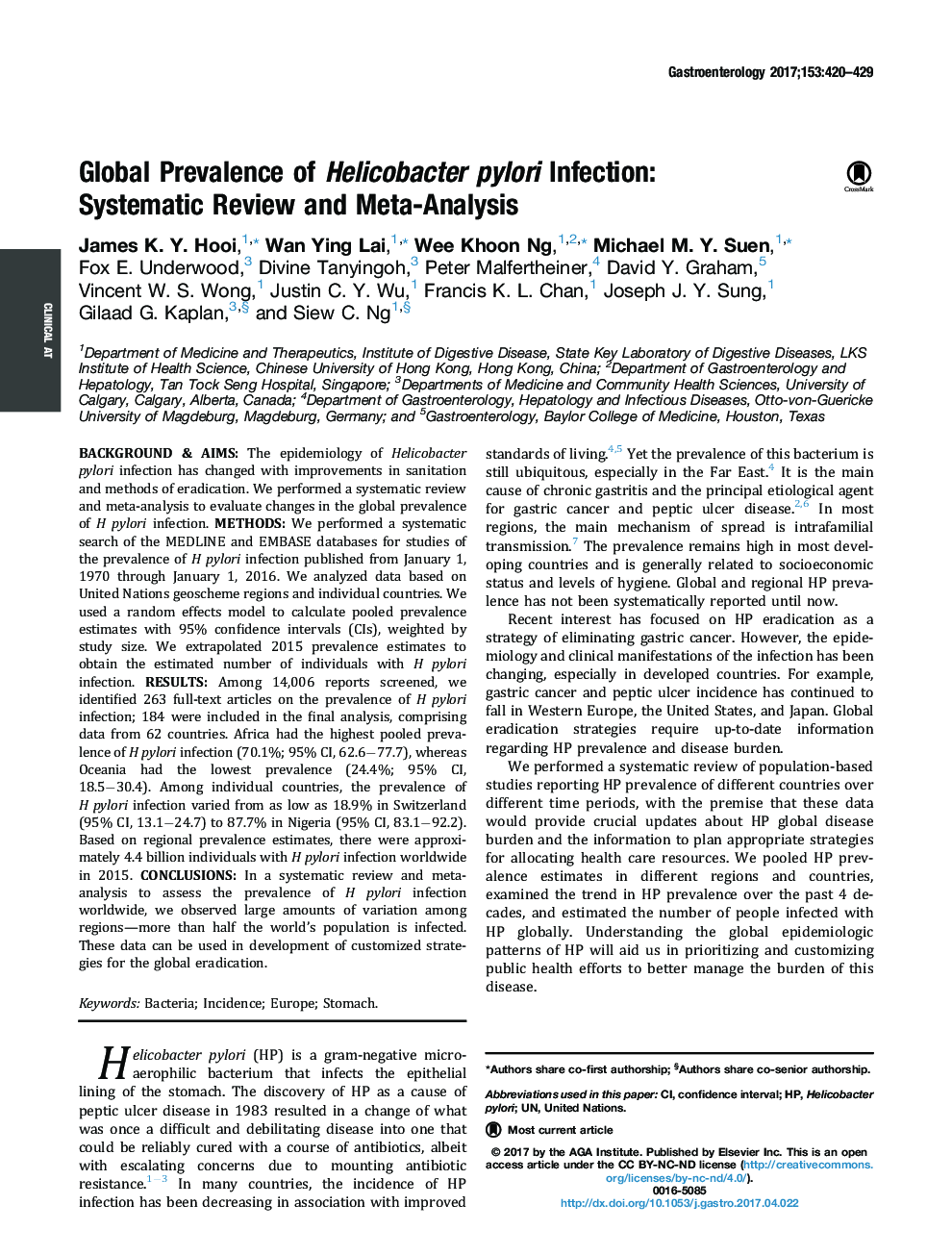| Article ID | Journal | Published Year | Pages | File Type |
|---|---|---|---|---|
| 5658249 | Gastroenterology | 2017 | 10 Pages |
Background & AimsThe epidemiology of Helicobacter pylori infection has changed with improvements in sanitation and methods of eradication. We performed a systematic review and meta-analysis to evaluate changes in the global prevalence of H pylori infection.MethodsWe performed a systematic search of the MEDLINE and EMBASE databases for studies of the prevalence of H pylori infection published from January 1, 1970 through January 1, 2016. We analyzed data based on United Nations geoscheme regions and individual countries. We used a random effects model to calculate pooled prevalence estimates with 95% confidence intervals (CIs), weighted by study size. We extrapolated 2015 prevalence estimates to obtain the estimated number of individuals with H pylori infection.ResultsAmong 14,006 reports screened, we identified 263 full-text articles on the prevalence of H pylori infection; 184 were included in the final analysis, comprising data from 62 countries. Africa had the highest pooled prevalence of H pylori infection (70.1%; 95% CI, 62.6â77.7), whereas Oceania had the lowest prevalence (24.4%; 95% CI, 18.5â30.4). Among individual countries, the prevalence of H pylori infection varied from as low as 18.9% in Switzerland (95% CI, 13.1â24.7) to 87.7% in Nigeria (95% CI, 83.1â92.2). Based on regional prevalence estimates, there were approximately 4.4 billion individuals with H pylori infection worldwide in 2015.ConclusionsIn a systematic review and meta-analysis to assess the prevalence of H pylori infection worldwide, we observed large amounts of variation among regions-more than half the world's population is infected. These data can be used in development of customized strategies for the global eradication.
